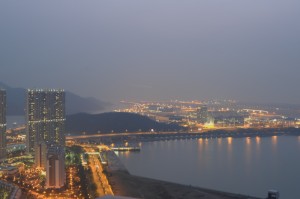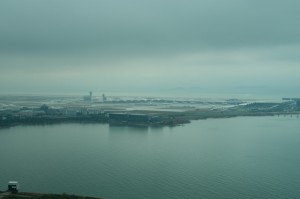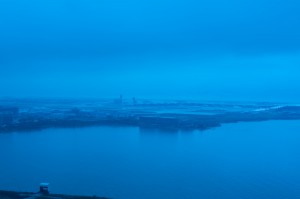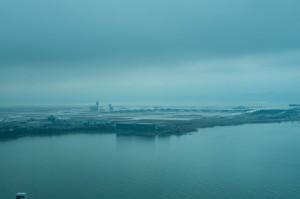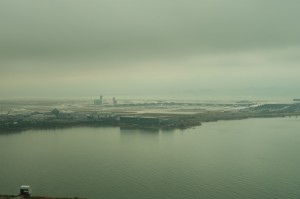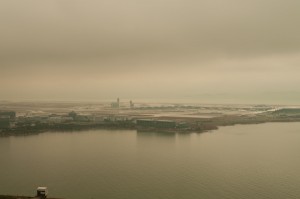Multiple exposure: 2nd try
April 15th, 2009 | Author: Sunny
This time I think it looks better.
Here is my pictures with two exposures which were taken apart about 1 hr for each exposure. The 2nd exposure took about 30 sec with f/11.
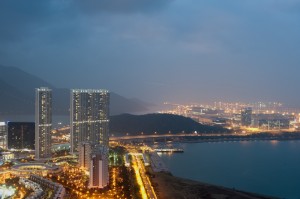
I took this one with same setting (except for WB) about 10 second after the multiple exposure shoot.
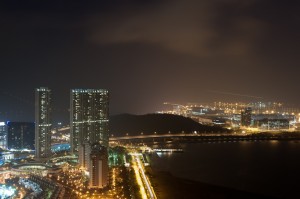
I am sure you can see the differences ![]()
Photography: Multiple Exposure
April 14th, 2009 | Author: Sunny
I always want to try that.. after I learnt this technique in my photography class.
This picture was shoot with two exposures. First, I set f/13 for the first exposure for about 1/5sec, then I set my aperture as f/9 for final exposure for about 15 sec. About 1 hour differences for each exposure taken. Actually I failed it because somehow the picture was little bit out of focus.. probably I accidently moved little bit the camera for the second shoot. I am gonna try it again tomorrow. It is one chance a day thing.. you miss it, then you miss it.
I took it with D700. To do it, you must do something so that D700 will not end the multiple exposure mode if there is no activities for 30s. For me, I decided to turn the monitor delay mode for playback to 10min. So, I had to check every 10 minutes to make sure I was still in multiple exposure mode with the playback monitor on. it is little bit annoying, but I think you will get excited if you can take a very good shoot for waiting this much time.
White Balance – Photography
March 06th, 2009 | Author: Sunny
I went to my first photography course yesterday. White balance was something that I don’t really understand how it worked before… but I got some idea now. I may be wrong, but I am going to demonstrate here:
my D700 can adjust color temperature for 2500K to 10000K. Today it is a cloudy weather. I found about 5000k-6000k probably is the right color temperature setting for today. I will use 5000k for comparison in this experiment.
I also tried 2500k, 4000k, 8000k, and 10000k (remember the color temperatures here are the white balance setting for my camera, so don’t be confused with the real color temperature for this cloudy day) :
Color temperatures is like this:
The lower the color temperature, light spectrums shift to contain more orange or red wavelengths. In contrast, the higher the color temperature, light spectrums shift to contain more blue wavelengths. As the color temperature rises, the color distribution becomes cooler.
Result:
In this experiment, the correct color temperature is 5000k. If my camera white balance setting for color temperature is lower than 5000k, my camera will absorb more blue light, and as result my photo will become blueish. (because the camera thinks that the color temperature is low.)
On the other hand, if my camera white balance setting for color temperature is higher than 5000k, my camera will absorb less blue light, and as result my photo will become reddish. (because the camera thinks that the color temperature is high.)
Pretty simple concept. If you want to learn more about white balance, I found the site has much better explanation how white balance setting and color temperature works. the URL is: http://www.cambridgeincolour.com/tutorials/white-balance.htm
